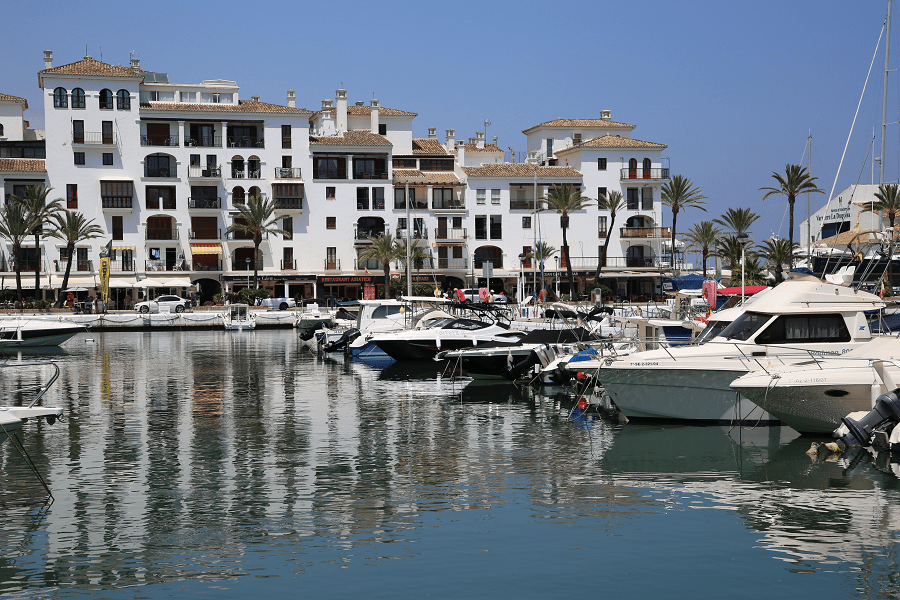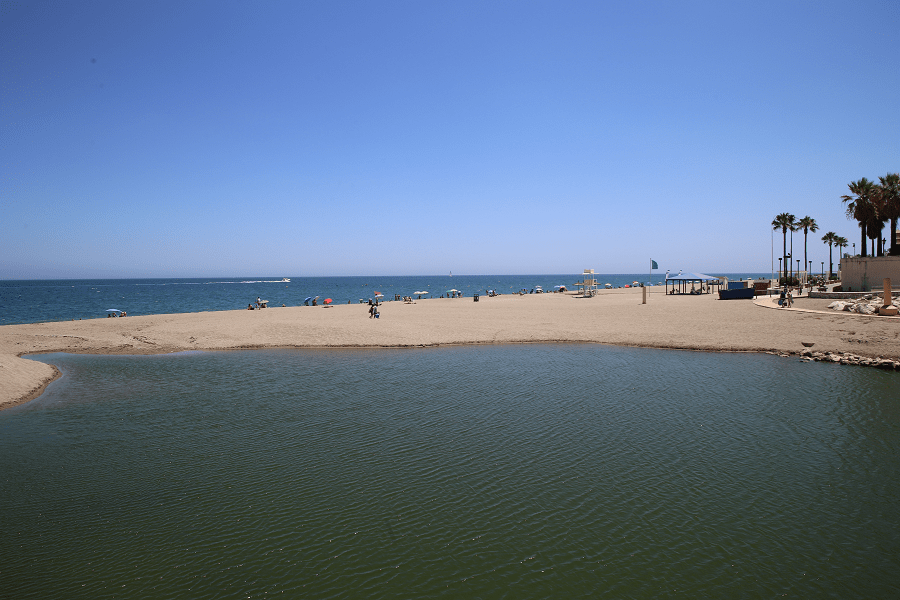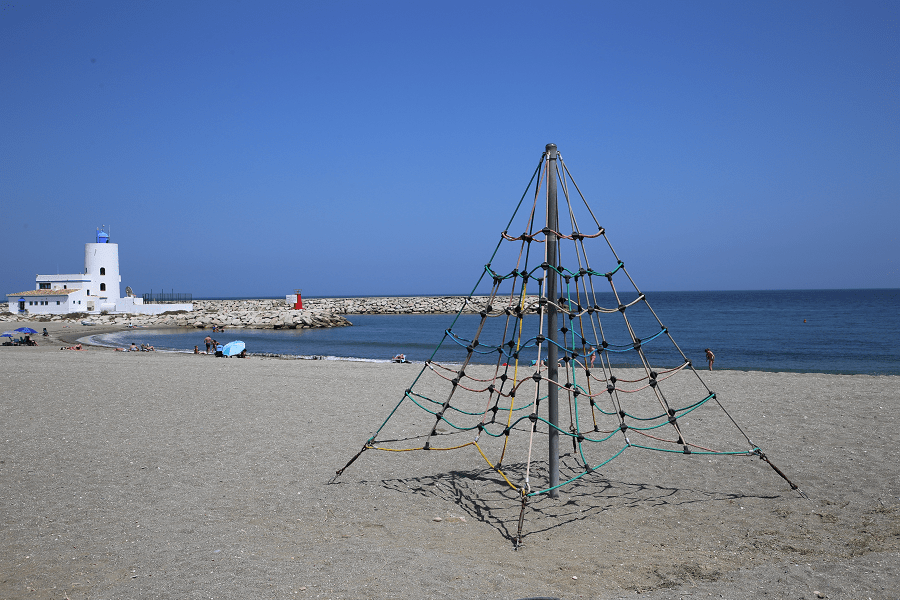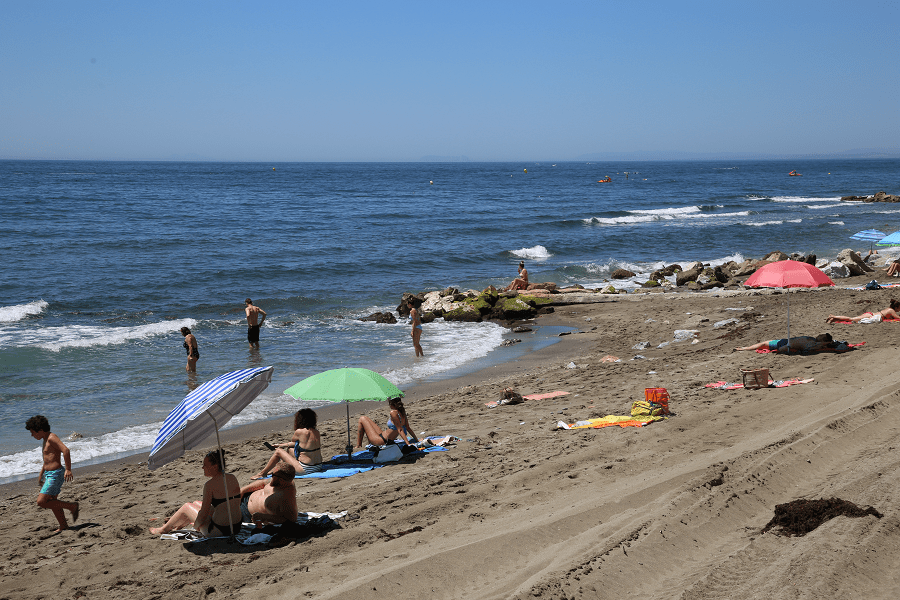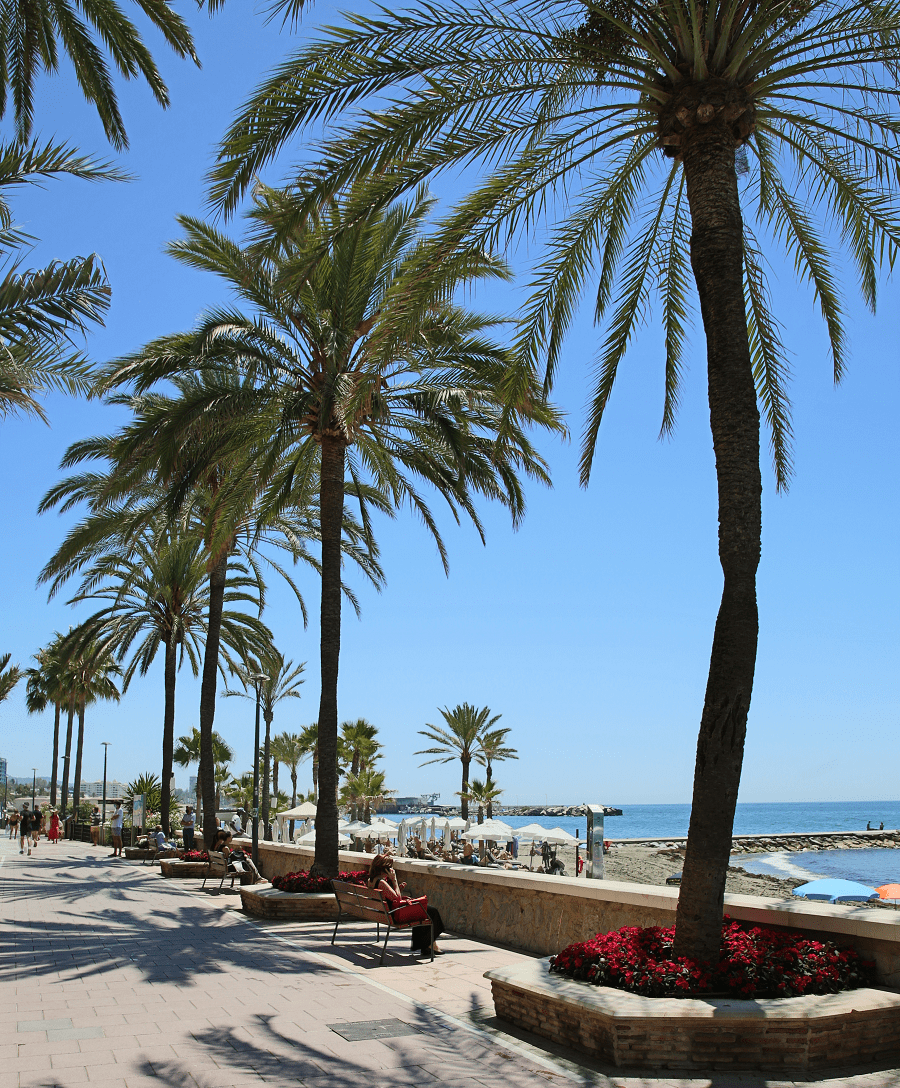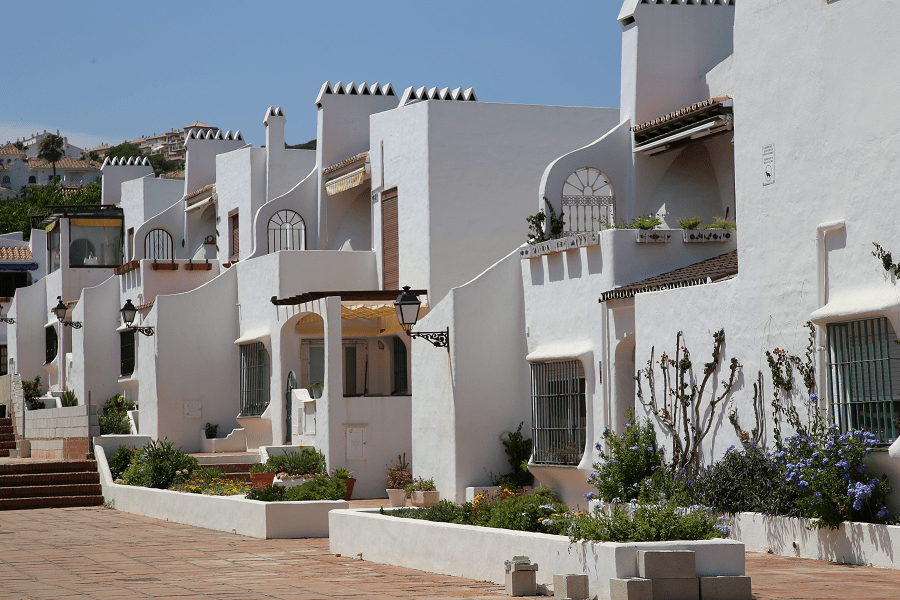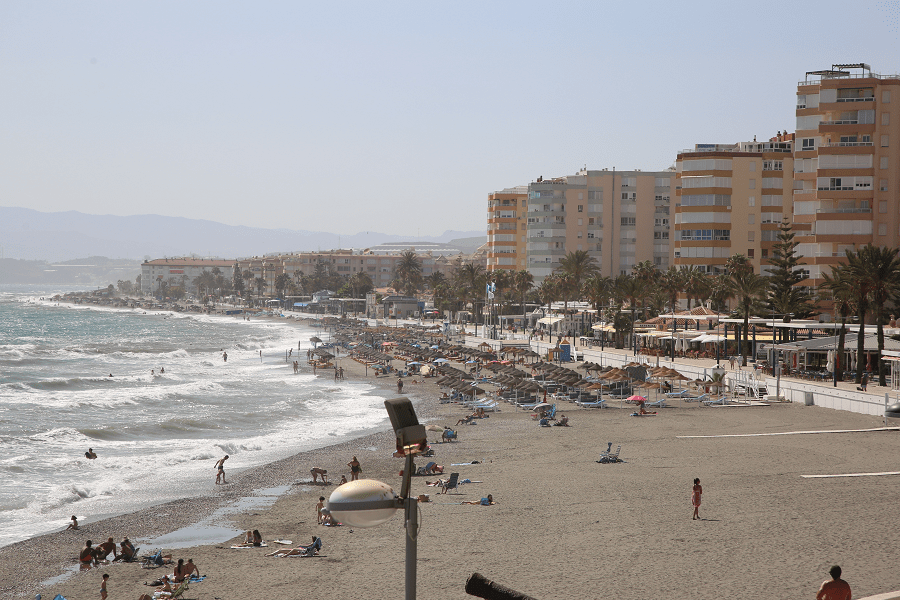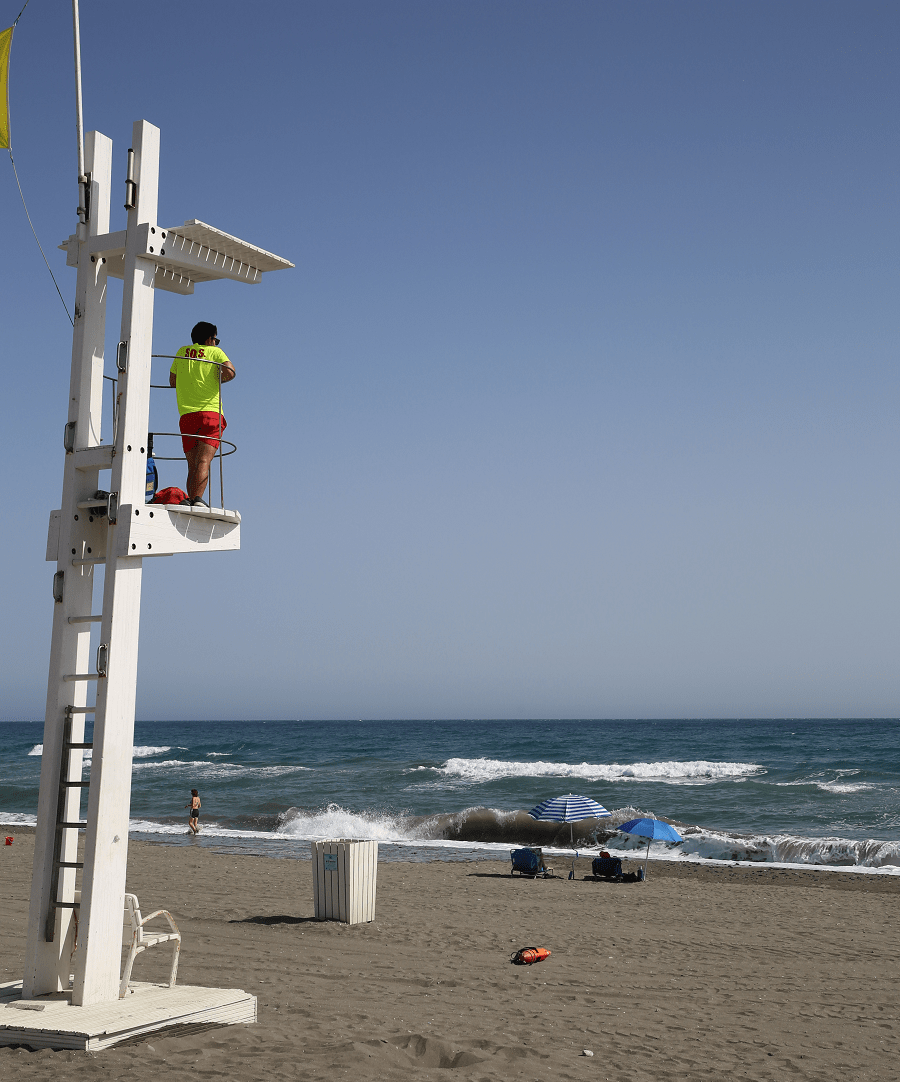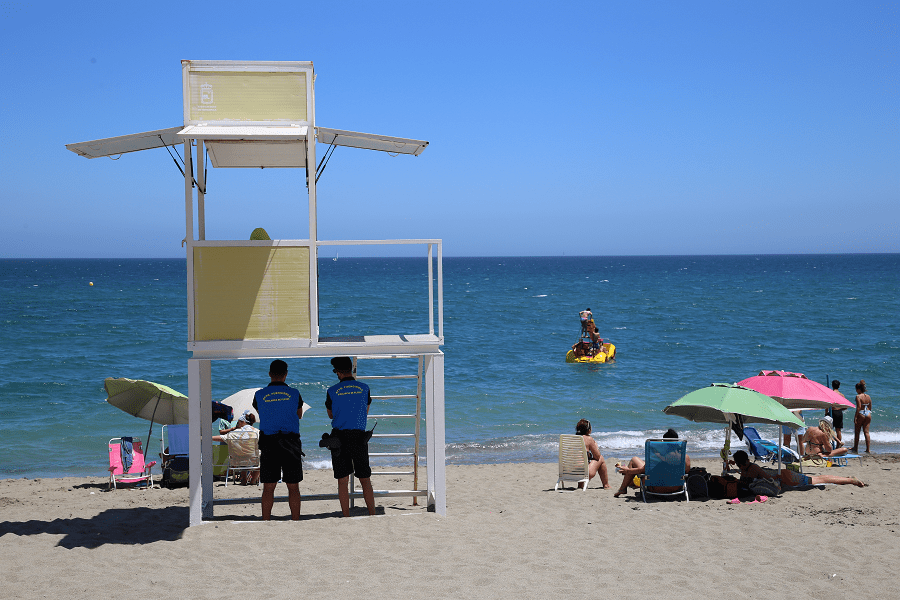The Costa del Sol (“Sun Coast”) is a region in the south of Spain in the autonomous community of Andalusia, comprising the coastal towns and communities along the coastline of the Province of Málaga and the eastern part of Campo de Gibraltar in Cádiz. Formerly made up only of a series of small fishing settlements, today the region is a world-renowned tourist destination.
It is one of the most popular parts of the Mediterranean resorts of Spain.
The Costa del Sol is situated between two lesser known coastal regions, the Costa de la Luz and the Costa Tropical.
The region has no official limit, but it is generally accepted that the Costa del Sol stretches from the municipality of La Línea de la Concepción in the west to Nerja in the east, spanning around 150 kilometers of coastline.
The region was a relatively prosperous commercial and industrial center for much of the 19th century. The tourist boom in the area began in the 1920s with the opening of the Baños del Carmen in Málaga and a golf course in Torremolinos.
Most popular resorts (from east to west)
Nerja has a long history proven by the paintings found in the Cueva de Nerja, discovered in 1959, which could constitute the oldest rock art images in the history of mankind with 42,000 years old. Under Muslim rule, its name was Narixa, which means “abundant source” and is the origin of the current name.
El Morche is a resort district in the Spanish municipality of Torrox, in the province of Malaga. Torre de El Morche or Güi: it is one of the most outstanding monuments of this nucleus located near the N-340 road and the Güi ravine, hence its name. It was built before 1497.
Torrox is frequented especially by German and British tourists. The city itself is divided into sections: Torrox Costa on the sea and Torrox Pueblo, four km inland. Torrox Park, a housing section in between the costa and the village, could be seen as another division. Torrox is located in close proximity to Nerja, and 50 km from Malaga.
Torre del Mar is bounded by the channels of the Río Vélez and Río Seco. It is located 33 kilometers east of the provincial capital Málaga, on the axis formed by the A-356, A-7 and N-340A highways. The tourism sector constitutes the main productive sector of the municipality of Vélez-Málaga, followed by agriculture, which stands out for the production of subtropical crops such as mango, and especially avocado. In addition, the largest fishing fleet on the Costa del Sol moors in the Port of La Caleta.
Rincón de la Victoria is the ninth most populated municipality in the province and the second in the region after Vélez-Málaga. The population is concentrated in four urban centers, three coastal and one inland (La Cala del Moral, Rincón de la Victoria, Torre de Benagalbón and Benagalbón).
Malaga – the main tourist spot on the Costa del Sol.
Torremolinos – a poor fishing village before the growth in tourism began in the late 1950s, was the first of the Costa del Sol resorts to be developed and is still the most popular in the region. The influx of foreigners, intellectuals, bohemians, hippies, artists, aristocrats, jet-set personalities and tourists in general during the 1960s and 1970s created a liberal, permissive and cosmopolitan atmosphere that differentiated it from other areas of the Costa del Sol, becoming one of the main references for musical and nightlife in Spain.
Benalmádena is one of the municipalities with the largest hotel offer on the Costa del Sol. Today, Benalmádena is one of the main tourist destinations on the Costa del Sol, notable for its leisure establishments, which include an amusement park, two aquariums, a casino, a cable car and one of the largest marinas in Andalusia.
Fuengirola is a major tourist resort, with more than 8 km of beaches and a medieval Moorish fortress. In common with much of this coast, it has been the subject of considerable urban development. Founded by the Phoenicians, Romans, Byzantines, Visigoths and Muslims, among other peoples, passed through Fuengirola, until its definitive incorporation into the Crown of Castile in 1485. Its development slowed due to the intense Berber piracy that the area suffered for centuries, it became municipality after separating from Mijas in 1841, still being a small fishing village. Currently, Fuengirola is an important tourist center with around 250,000 inhabitants during the summer months.
La Cala de Mijas forms the resort part of the Municipality of Mijas. In the middle of the Costa del Sol, La Cala is located in the coastal zone of the municipality, and except a few rocks is practically urbanized within a 12 kilometres radius. It sits between the limits of Fuengirola to the east, and Marbella to the west.
Marbella – a protagonist in the early Spanish industrial revolution in the 19th century, has experienced continuous growth throughout the 20th century and the beginning of the 21st century, developing an economy based on the tourist offer aimed at visitors and temporary residents of medium and high purchasing power.
Estepona is a popular international tourist destination, with a wide range of hotels and interesting leisure and sports facilities. It has a very well-kept historic center, beaches and a significant number of second homes. It has several five-star hotels such as Kempinski Bahía Beach, Elba Estepona Gran Hotel, Healthhouse Las Dunas and Senator Banús. During its history, Estepona has been linked to its status as a coastal town, the scene of naval battles due to its proximity to the Strait.
Casares is located on the border with the province of Cádiz, in the region of the Western Costa del Sol. Casares is the prototype of the Andalusian white village: narrow, steep and winding streets and whitewashed houses. In addition, it is the birthplace of Blas Infante, the Father of the Andalusian nationalism.
The Puerto de La Duquesa is a marina, enjoyed by sailors and tourists alike. The beautiful port of Duquesa offers full Marina services for boating enthusiasts as well as a myriad of attractions for those with no aspirations to take to the water. For those that a do, a number of companies offer Jet Boat, Wake Board, Boat trips and Scuba Diving. The attractive promenades surrounding the port offer a variety of restaurants, intimate bars and cafes.
San Roque is a part of the province of Cádiz, which in turn is part of the autonomous community of Andalusia. San Roque is situated a short way inland of the north side of the Bay of Gibraltar, to the north of the Gibraltar peninsula. The urban area of San Roque was the first enclave of Campo de Gibraltar to be declared a historical-artistic complex by the Ministry of Culture of Spain.
La Línea de la Concepción – a westernmost resort of the Costa del Sol. The city lies on the sandy isthmus which is part of the eastern flank of the Bay of Gibraltar, and it limits with the Gibraltar–Spain border to the south. La Línea has close economic and social links with the British overseas territory of Gibraltar.
The Golf Coast
The Costa del Sol is also known as the Costa del Golf. It has the highest concentration of golf courses in Andalusia and the European continent, which are distributed as follows: 21 in the municipality of Marbella, 11 in Mijas, 10 in Estepona, 6 in Benahavís, 9 in San Roque, 3 in Malaga , 2 in Casares, Rincón de la Victoria and Benalmádena and 1 in Vélez-Málaga, Fuengirola, Nerja, Manilva.
Sea ports
- Puerto Marina Alcaidesa (sports)
- Port of La Atunara (sports and fishing)
- Sotogrande port (sports)
- Port of La Caleta (sports and fishing)
- Puerto de la Duquesa (sports)
- Port of Estepona (sports and fishing)
- Puerto Banús (sports)
- Marbella Marina
- Puerto de Marbella (sports and fishing)
- Puerto de Cabopino (sports)
- Port of Fuengirola (sports and fishing)
- Puerto Deportivo de Benalmádena (sports)
- Port of Malaga (commercial, passenger, cruise, sports and fishing)
- Real Club Mediterráneo (sports)
- Puerto El Candado (sports)
How to get to?
The nearest international airports are in:
Malaga, Granada, Jerez de la Frontera
Cuisine and best restaurants
Native cuisine on the Costa del Sol, as in the rest of Andalusia, has been influenced historically by Spanish, Jewish and Arabic traditions, and emphasises seafood. Pescaíto frito, small fish breaded without egg and fried in olive oil, then served with fresh lemon, is a universally popular dish. Gazpacho is a famous refreshing cold soup made of raw tomatoes, cucumber, onions, green peppers, garlic, bread, oil and vinegar. Tortillas, Spanish omelettes made with potatoes and served cold, are typical, and a plate of thin-sliced jamón serrano, or dry-cured ham, with a glass of sherry or Málaga wine is a traditional combination. The Ir de Tapas (tapas tour), a Spanish expression meaning to make the rounds of bars drinking and eating snacks, is an important social activity for Spaniards. Some bars will serve a tapa for free when one orders a drink. Churros, fried-dough pastries served hot and dipped in café con leche or hot chocolate are a typical breakfast food.
Chiringuitos, small, open-air beachside restaurants, offer respite from the summer heat of the cities in the high holiday season.
See here best sea and ocean resorts of France and Spain (223 objects)



